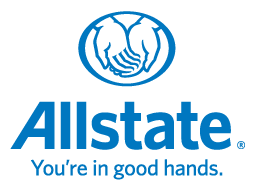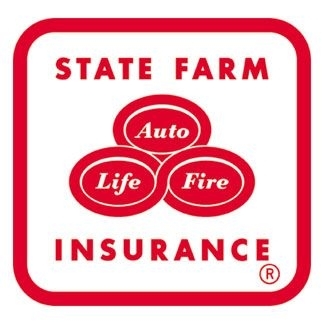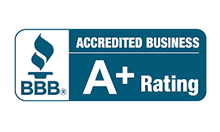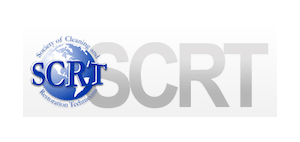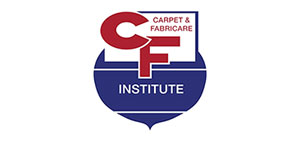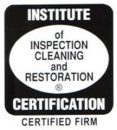Smoke damage cleanup can be a daunting task after a fire incident in your home. The time it takes to clean a house from smoke damage depends on several factors such as the extent of the damage, the size of the house, and the cleaning methods employed. It is essential to have a realistic understanding of the cleanup timeline to effectively plan for the restoration process.
Have you ever wondered how long it really takes to clean a house from smoke damage? Is it a matter of days, weeks, or even months? Discover the answer and gain valuable insights into the timeline for smoke damage restoration in the following sections.
Key Takeaways:
- The time it takes to clean a house from smoke damage depends on various factors.
- The severity of the damage, the size of the house, and the cleaning methods employed all influence the cleanup timeline.
- Understanding the basics of smoke damage and utilizing professional cleaning techniques can help expedite the restoration process.
- Immediate actions, such as securing the property and contacting professional cleaners, are crucial in minimizing further damage and ensuring prompt restoration.
- Smoke odor removal is a critical component of the cleanup process, and various techniques can be employed to eliminate odors and restore indoor air quality.
Understanding Smoke Damage in Homes
Smoke damage refers to the residue left behind after a fire, which can affect various surfaces, including walls, ceilings, furniture, and personal belongings. Smoke is made up of tiny particles, soot, and other chemicals that can penetrate porous materials, causing discoloration, odor, and potential health hazards.
When a fire occurs, the smoke particles released into the air can quickly spread and settle on various surfaces throughout the affected area. These soot particles can be particularly challenging to remove due to their ability to stick to surfaces and penetrate deep into porous materials.
Understanding the nature of smoke damage is crucial in determining the appropriate cleaning techniques and estimating the time required for restoration. It is important to address smoke damage promptly to minimize further damage and ensure the safety and well-being of the occupants.
The Basics of Smoke Damage Cleaning Processes
When it comes to cleaning a house from smoke damage, understanding the basics of the restoration process and the various cleaning techniques is crucial. This section will delve into two key aspects of smoke damage cleaning: assessment and documentation, as well as surface cleaning and restoration techniques.
Assessment and Documentation
Before initiating the cleanup process, a thorough assessment of the smoke damage is necessary. This involves evaluating the extent of the damage and documenting the affected areas. By carefully documenting the damage, restoration professionals can develop a comprehensive plan to address each specific area and ensure a thorough restoration.
Surface Cleaning and Restoration Techniques
Smoke damage affects different materials and surfaces in various ways. To effectively clean and restore the affected areas, professional cleaners employ different techniques based on the severity of the smoke damage. Some common cleaning techniques include:
- Dry cleaning: This method utilizes specialized sponges, vacuuming, and brushing to remove loose soot particles from surfaces without the use of water. Dry cleaning is particularly suitable for delicate items and surfaces that may be damaged by moisture.
- Wet cleaning: Wet cleaning involves using water-based solutions, detergents, and cleaning agents to remove stubborn soot stains and residue from hard surfaces. Professional cleaners may utilize scrubbing, rinsing, and drying techniques to achieve optimal results.
- Soda blasting: Soda blasting is a specialized technique that employs compressed air to propel baking soda particles onto porous materials. This process effectively removes smoke residue, eliminates odors, and restores the cleanliness of the affected areas.
- Ozone treatments: Ozone treatments are used to eliminate smoke odors by generating ozone gas, which neutralizes the odor molecules. This technique penetrates porous materials and disinfects surfaces, effectively eliminating the smoke odor.
Professional restorers assess the smoke damage and select the most appropriate cleaning techniques for each surface, ensuring that all visible signs of smoke damage and associated odors are effectively eliminated. The goal is to restore the affected areas to their pre-damage condition, leaving behind a clean and odor-free environment.
How Long Does It Take to Clean a House From Smoke Damage?
When it comes to cleaning a house from smoke damage, the timeline can vary depending on several factors. Let’s take a closer look at the key considerations that affect the restoration time.
- Extent of the damage: The severity of the smoke damage and the areas affected play a significant role in determining the overall cleaning time. Extensive damage may require more extensive cleaning and restoration efforts.
- Size of the house: The size of the house is another crucial factor. Larger properties with more rooms and surfaces will naturally take more time for thorough cleaning and restoration.
- Type of materials: Different materials react differently to smoke damage. Porous materials, such as carpets, upholstery, and fabrics, tend to absorb more smoke particles, making the cleaning process more time-consuming compared to hard surfaces.
- Cleaning methods employed: The choice of cleaning techniques and equipment can also impact the cleanup timeline. While certain methods may take longer to complete, they can yield better results in terms of thoroughness and restoration.
A professional smoke damage cleanup team will carefully assess these factors to provide an accurate timeline for restoring your home. By considering these aspects, you can have a better understanding of the time required and plan accordingly for the cleanup process.
Professional Smoke Damage Cleaning Techniques
When it comes to smoke damage cleaning, professional cleaners employ various techniques to effectively restore homes and eliminate smoke residue. These techniques are specifically designed to address different types of materials and surfaces, ensuring a thorough and efficient restoration process.
Dry cleaning: This method involves the use of specialized sponges, vacuuming, and brushing to remove loose soot particles from surfaces without the use of water. It is particularly effective for delicate items and surfaces that may be damaged by moisture. Professional cleaners carefully assess the extent of the smoke damage and apply dry cleaning techniques accordingly, ensuring a gentle yet thorough cleaning process.
Wet cleaning: In cases where stubborn soot stains and residue are present, professional cleaners utilize wet cleaning techniques. This involves the use of water-based solutions, detergents, and cleaning agents to effectively remove smoke residue from hard surfaces. The process typically includes scrubbing, rinsing, and drying techniques to achieve optimal results. Professional cleaners have the expertise to determine the appropriate cleaning agents and methods for different types of materials, ensuring a safe and efficient restoration process.
Soda blasting: For porous materials, such as carpets, upholstery, and fabrics, soda blasting is a highly effective technique. This method involves using baking soda particles propelled by compressed air to remove smoke residue without causing damage. Soda blasting is a non-destructive cleaning method that penetrates deep into porous surfaces, effectively eliminating odors and restoring the affected materials to their pre-damage condition.
Professional smoke damage cleaning techniques combine expertise and specialized tools to ensure a thorough restoration process. By employing these techniques, professional cleaners can effectively remove smoke residue, eliminate odors, and restore homes to their pre-damage state.
Smoke Odor Removal: A Critical Component
To effectively restore a house from smoke damage, it is crucial to address the issue of smoke odor. Simply cleaning the visible residue may not be enough to eliminate the persistent smell of smoke. Therefore, smoke odor removal becomes a critical component of the restoration process.
Source elimination:
In order to completely remove smoke odors, it is necessary to identify and eliminate the sources of the odor. This may involve replacing or thoroughly cleaning items that retain the smell of smoke. By addressing the root cause of the odor, homeowners can ensure that the restoration is comprehensive and long-lasting.
Air purification:
Professional cleaners utilize various air purification techniques to neutralize and eliminate smoke odors from the air. This ensures that the indoor air quality is restored to a safe and odor-free state. Common methods include:
- Air purifiers: These devices use filters to capture and eliminate airborne particles, including smoke odors. They work by circulating and purifying the air in the affected area.
- Ozone generators: Ozone generators produce ozone, a molecule that helps neutralize and eliminate odors. When used appropriately and in controlled conditions, ozone generators can effectively remove smoke odors from the air.
- Thermal fogging: Thermal fogging involves the use of a specialized machine that produces a fog made of deodorizing agents. This fog penetrates the affected area and neutralizes smoke odors, leaving the space smelling fresh and clean.
By incorporating these air purification techniques into the restoration process, professional cleaners can confidently eliminate lingering smoke odors, ensuring that the house is not only visually restored but also free from any residual odors.
Preventive Measures and Immediate Actions After a Fire
After a fire, it is crucial to take immediate preventive measures and actions to minimize further damage and ensure the safety of the property. By securing the premises and contacting professional smoke damage cleaning and restoration companies, homeowners can start the cleanup process promptly.
One of the essential preventive measures is boarding up windows and doors and installing temporary fencing. This helps to prevent further damage caused by external elements and protects the property from potential break-ins or trespassing. By securing the property, homeowners can create a safe environment for the upcoming cleanup and restoration process.
Another critical action to take is contacting professional smoke damage cleaning and restoration companies as soon as possible. These experts have the knowledge, experience, and specialized equipment to handle the cleanup and restoration effectively. Promptly contacting professionals ensures that the cleanup process starts without delay, minimizing the potential for secondary damage and maximizing the chances of successful restoration.
Factors Affecting the Timeline of Smoke Damage Cleanup
Several factors can influence the timeline of smoke damage cleanup, ultimately affecting the restoration time. Understanding these factors is crucial for homeowners who want to effectively plan and prepare for the cleanup process.
Severity of the Smoke Damage
The severity of the smoke damage is one of the primary factors that determine the timeline for cleanup and restoration. Properties with extensive and severe smoke damage will naturally require more time to clean and restore. Additionally, if the smoke damage has resulted in significant structural damage, repairs will need to be completed before the cleanup process can begin, further extending the overall restoration time.
Availability of Resources and Equipment
The availability of trained professionals, equipment, and cleaning supplies can also impact the timeline of smoke damage cleanup. During peak periods or in the aftermath of natural disasters, the demand for these resources may be high, leading to limited availability. In such cases, homeowners may experience longer cleanup times as they wait for the necessary resources to become available.
It is important for homeowners to understand these factors and plan accordingly when it comes to smoke damage cleanup and restoration. By taking into account the severity of the damage and considering the availability of resources and equipment, homeowners can set realistic expectations for the timeline of the cleanup process.
Conclusion
Cleaning a house from smoke damage is a meticulous process that requires professional expertise and attention to detail. The timeline for smoke damage cleanup varies depending on several factors, including the extent of the damage, the size of the house, and the cleaning methods employed.
Understanding the basics of smoke damage, such as the nature of smoke, its impact on different surfaces, and the appropriate cleaning techniques, is crucial in determining the time required for restoration. By assessing the extent of the damage and documenting the affected areas, homeowners and professional cleaners can develop a comprehensive restoration plan and efficiently allocate resources.
Immediate actions after a fire, such as securing the property and contacting professional smoke damage cleaning and restoration companies, play a vital role in minimizing potential secondary damage and ensuring prompt cleanup. Moreover, the availability of trained professionals, equipment, and cleaning supplies can also affect the timeline, especially during peak periods or natural disasters.
By following these steps and utilizing professional cleaning techniques, homeowners can effectively restore their homes and eliminate smoke odors. With proper planning and the support of experienced professionals, the restoration process can be carried out efficiently, bringing the house back to its pre-damage condition.
FAQ
How long does it take to clean a house from smoke damage?
The time it takes to clean a house from smoke damage depends on factors such as the extent of the damage, the size of the house, and the cleaning methods employed.
What is smoke damage?
Smoke damage refers to the residue left behind after a fire, which can affect various surfaces and cause discoloration, odor, and potential health hazards.
What are the basics of smoke damage cleaning processes?
The cleaning process includes assessment and documentation of the damage, as well as employing different surface cleaning and restoration techniques depending on the materials affected.
What factors affect the timeline for smoke damage cleanup?
The severity of the damage, the size of the house, the type of materials affected, and the cleaning methods employed are some factors that can impact the timeline for smoke damage cleanup.
What are the professional smoke damage cleaning techniques?
Professional cleaners may use dry cleaning, wet cleaning, or specialized techniques like soda blasting to effectively remove smoke residue from surfaces.
How can smoke odor be removed?
Smoke odor can be eliminated by identifying and eliminating the sources of the odor, as well as using air purification techniques such as air purifiers or ozone generators.
What preventive measures and immediate actions should be taken after a fire?
It is important to secure the property by boarding up windows and doors, as well as contacting professional smoke damage cleaning and restoration companies as soon as possible for prompt cleanup and restoration.
What factors can affect the timeline of smoke damage cleanup?
The severity of the smoke damage and the availability of resources and equipment can impact the timeline of smoke damage cleanup.
What is the importance of effective restoration and cleaning a house from smoke damage?
Effective restoration and cleaning help homeowners eliminate smoke odors and restore their homes to a safe and odor-free state after a fire incident.





